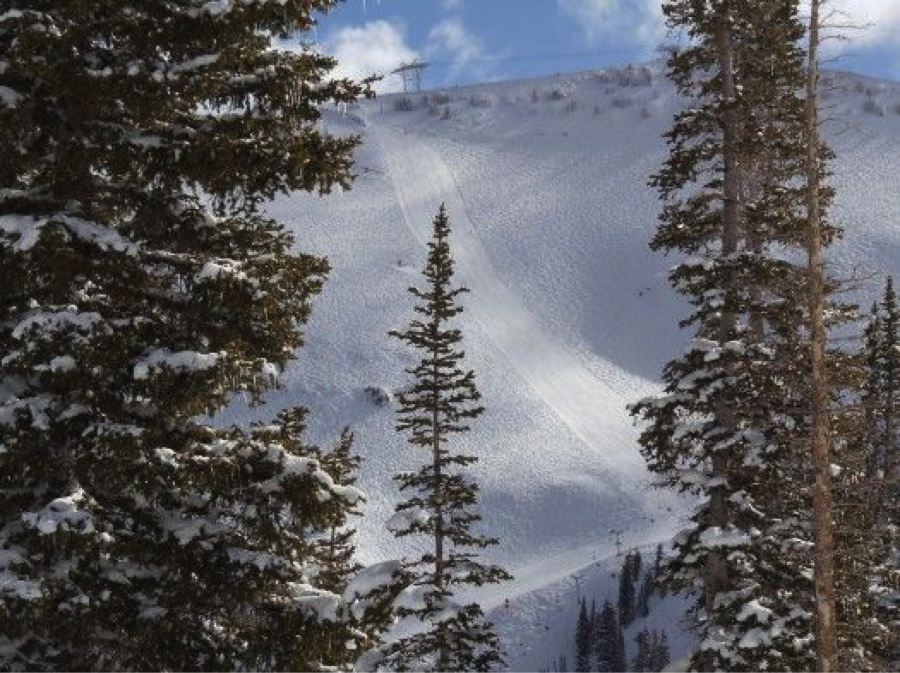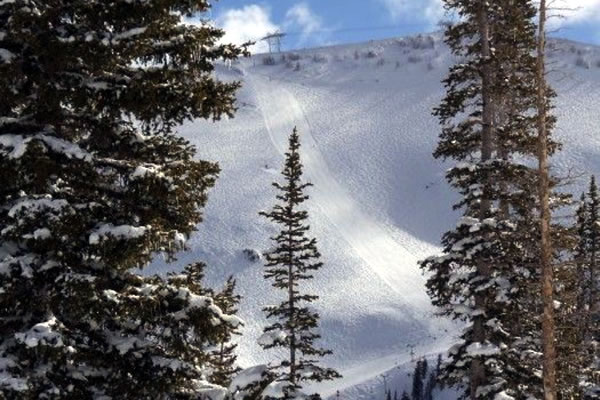On Vibrations
(from Snowbird Secrets)
At Realskiers we focus our energies on equipment, but skiing isn’t about the stuff; it’s what you do with the stuff that matters. To ring in the New Year on the right note, the first post of 2015 is an abbreviated version of one of the chapters in my book (co-authored by the esteemed “Guru” Dave Powers), Snowbird Secrets.
If you tear the universe down into its most essential components, all you have left is light and vibration. The tiny squiggles of energy that are the foundation of the quantum world are the essence of emanation, infinitesimal moments of spin, the fractals that make up the circle of life. What is vibration but a curve moving through space? Looked at from the perspective of the most fundamental elements from which we – and everything else, known and unknown – are constructed, we were made to ski.
Can it be mere happenstance that the single property that underlies all existence is also the most vital ingredient in skiing? Not only do we, like vibrations, move on a curved path through space, but that we move at all is a function of the ski’s ability to vibrate. We don’t often think of them this way, but skis are made to slide, and vibration is a prerequisite for sliding. A ski that doesn’t vibrate doesn’t move; it might as well be a snowshoe. The reason that metal is an indispensible element in race skis isn’t, as is popularly imagined, because metal makes the ski stiffer, but because only metal issues just the right harmonics to break the grip of suction at speed.
Ski designers know all about vibration. The best ones think of little else. How to stifle the noxious frequencies that perturb edge grip while allowing safe passage to the essential vibrations that allow the ski to glide? It’s a conundrum every ski must solve to achieve the epiphany of the perfect descent. A case could be made that we are like our skis in this regard: we too must be able to filter out energy that impedes our purpose while channeling the primary energy that sustains us.
A vibration moves by rising and falling, rising and falling, a cycle of constant renewal. This describes our pattern of movement on the mountain, a cycle that takes us from bottom to top and back to the bottom in order to rise again. But unlike an innate hum, we have will, so we can manage the frequency of our descent to match our own internal harmonic. To do so, we draw on a well of energy we call gravity that is the mountain’s reward for our heeding its call…
Vibrations move at a given frequency, a signature wavelength they can use to organize matter or light into a pattern. If you touch a vibrating tuning fork to a plate of crystals, the crystals will move into a precise, incorruptible pattern that is that note. Different vibrations applied to light we call colors, and while we can detect millions of shades, the seven basic colors – red, orange, yellow, green, blue, indigo and violet – correspond exactly and invariably to the seven notes of the scale. So vibration is light and light is vibration, throughout our visible range and beyond.
Let us take the lesson to the hill. No snow condition induces vibration like early-morning corduroy, before temperature and traffic can dull the sharp ridges left by the groomers. So off the first tram head directly to Regulator Johnson, the iconic, west-facing ballroom that inclines ever steeper as it rolls downhill. As you come off the road that marks the run’s entry, the slightest sideward drift will induce a hum you can feel in your teeth. Your feet will feel like they’re living directly over the subway. When you try to jam your edges in the fall-away pitch, the hum only grows louder and your feet put in a request for a change in ownership. Now is the time to remember that vibration is color we don’t see, another shade of invisible light. So be light. Guide a gently pressured edge across the hill, knowing some drift is inevitable, and when the spirit moves you, add a dash of energy and edge angle and instantly segue to a weight shift and direction change. Will you be beautiful? Probably not. Will the vibration dissipate? No. But you will be managing both trajectory and speed, which should be enough to get the job done. Remember that this particular facet of the mountain is relentlessly long, so don’t let your horses run for the barn or you’ll be on Mr. Toad’s Wild Ride.
When you come off the last, steep pitch, you have only to negotiate your way past the base of the Little Cloud chair to pick up the gentle, ego-boosting terrain of Bassackwards. Your methods are the same: be light, set the edge and switch directions. Because gravity’s stream is running calmer now you can afford to play, altering the wavelength of your turns to match the vibrations emanating from the hill. After you pass the Mid-Gad restaurant on your right, you catch a road that wraps around until it deposits you on top of Big Emma, the widest boulevard on the Snowbird roadmap. Here the crystal ridges of the corduroy will perforce be softer, the vibration off the snow less strident. But the other vibrations, those that issue from far deeper in the mountain’s core, they still send out their subtle, sonic message to find your center. What the vibration of the mountain is telling you is that like the mountain itself, you are also a cache and conduit of energy. You also are made of light and sound, born to follow a curve through space.



